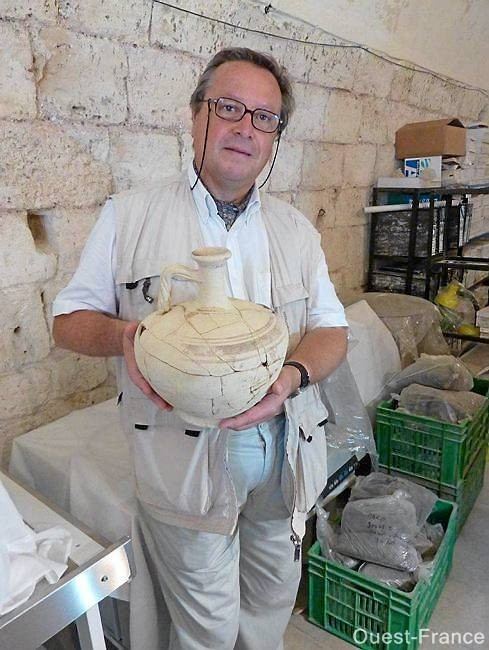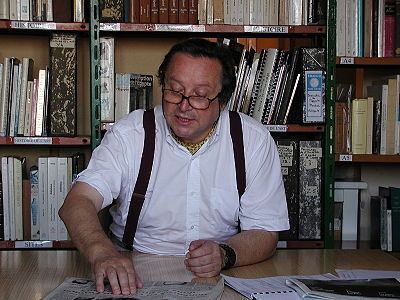Name Jean-Yves Empereur | ||
 | ||
Books Alexandria Rediscovered, Discoveries: Alexandria: Jewel of, Alexandria: Past - Present a, A Short Guide to the Catac, A Short Guide to the Graec | ||
Jean yves empereur catacombs of kom el shoqafa mp4
Jean-Yves Empereur ([ɑ̃pʁœʁ]; born 1952) is a French archeologist. He studied classic literature in the University Paris IV Sorbonne (DEA, CAPES, Agrégation de lettres in 1975, Doctorat in archeology in 1977).
Contents
- Jean yves empereur catacombs of kom el shoqafa mp4
- Jean Yves Empereur
- Archeological excavations
- Filmography
- Trivia
- References

He is a former member (since 1978) and general secretary (1982-2000) of the École française d'Athènes. He conducted some excavations, including some submarine ones, in Greece, Cyprus and Turkey, on the sites Thasos and Amathus.

He is a researcher from the CNRS, director of the fr:Centre d'études alexandrines (CEA) - Alexandria Studies Center] that he founded in 1990, and since then he leads the archeological research in Alexandria, on earth and underwater.

Jean Yves Empereur
Archeological excavations

Empereur conducts some emergency excavations right in Alexandria town center. The modern city was built over the ancient one, which means that the archeological excavations become possible only when old buildings are taken down for some civil works. On the Diana field, a Roman villa from the 2nd century can be found, showing some beautiful mosaics.
In 1993, a dike was to be built on the supposed site of the lighthouse of Alexandria. Empereur, Jean-Pierre Corteggiani and around thirty scuba divers then attempted a rescue operation by starting some excavations in a 2.25ha zone situated north-east from Fort Qaitbay.
Until 1996, these excavations in Alexandria harbour led to the discovery of many archeological remains: 5,000 architectural blocks weighing up to 75 tons, columns, capitals, huge broken statues, a dozen sphinxes, and above all the indisputable remains of the lighthouse itself. A 12-metre door made of Aswan granite was virtually reassembled. Some gigantic statues that used to stand against the lighthouse, representing Ptolemaic kings and queens, were found right next to their pedestal. Empereur hopes that in the future this marvellous site will be open to amateur scuba divers.
In March 1997, the site of the Gabbari Necropolis, Alexandria's city of the dead, was discovered during the building of the bridge linking the western harbour to the Cairo road. The director of the museums and archeological sites of Alexandria asked for Empereur's help on June 27. The general map of the ancient city appeared then, with the streets following the drawings by Dinocrates, the first urbanist architect.
Filmography
Gédéon Programmes produced a documentary trilogy about Empereur's work, directed by Thierry Ragobert:
Trivia
In 2001 Empereur confronted video games publisher Eidos Interactive for using his image in the fourth game of Tomb Raider series - the game's protagonist, Lara Croft, meets a French friend of hers in Alexandria, who appears to be an exact portrayal of Jean-Yves Empereur. The publisher apologized and agreed to stop using his image in the games.
